Meet the preLighters: a virtual catch-up with Monica Tambalo
27 February 2023
Monica Tambalo is a postdoctoral researcher in the Lodato lab at the IRCCS Humanitas Clinical and Research Center in Milan. Her goal is to expand our understanding of the molecular mechanisms underlying neurogenesis and human neurodevelopmental disorders. Monica joined us at preLights in 2020 and has since been involved in several collaborative projects. Here, we discuss her experiences as an early-career researcher moving from one place (and model organism!) to the other. We also talk about the sense of belonging to a larger community, the importance of preprinting and take a quick look into the future.

What sparked your initial interest in science?
My mum is a biologist and my dad has a physics background. So basically, an interest in science and biology came very natural to me. It’s this background combined with an inspirational biology teacher at secondary school that made me decide to study biology at the University of Padua.
“I would say that, with an element of luck, I chose to do my PhD in a place and lab that I really loved.”
When did your interest in research really take off and how did it further develop?
My interest in developmental biology really developed during my undergraduate studies. I decided to move to Paris, as part of a Master’s programme, to gain some lab experience. I studied the development of motor neurons in zebrafish – something that could also help improve our understanding of human neurodegenerative diseases. I really loved this lab experience and decided to follow it up by starting a PhD. I moved to London, partially because my boyfriend at the time – now, my husband – had already found a job there. I would say that, with an element of luck, I chose to do my PhD in a place and lab that I really loved. I worked on the chicken embryo – opening up lots of eggs – to study early cell fate decisions of sensory progenitors, with a focus on how inner ear precursors are established. It was wonderful and a great training in classical developmental biology techniques. Things I can still use now, even when working on a very different system: organoids.
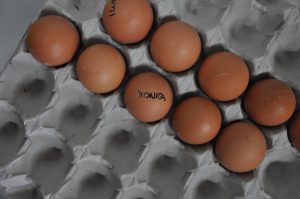
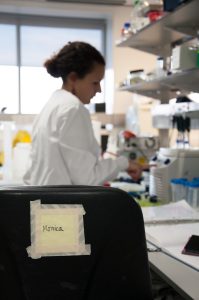
Monica “opening up lots of eggs” while studying inner ear development in the chicken embryo at King’s College London, UK.
So you went from zebrafish to chicken to organoids?
Well I went back to zebrafish for a while during my first postdoc at the Francis Crick Institute. Having first learned how vertebrate embryos develop and then moved to in vitro systems has proven highly valuable as I can use my knowledge in embryogenesis to generate brain organoids.
My postdoc at the Francis Crick Institute provided the opportunity for creativity and blue-sky thinking.
How did you experience the PhD-to-Postdoc transition?
I think my PhD was mostly about learning how to do science at the bench. My postdoc at the Francis Crick Institute provided the opportunity for creativity and blue-sky thinking. I was there when things were still at Mill Hill and then moved to the new building near King’s Cross. There was really a great, unique vibe in this place with a lot of amazing science being done.
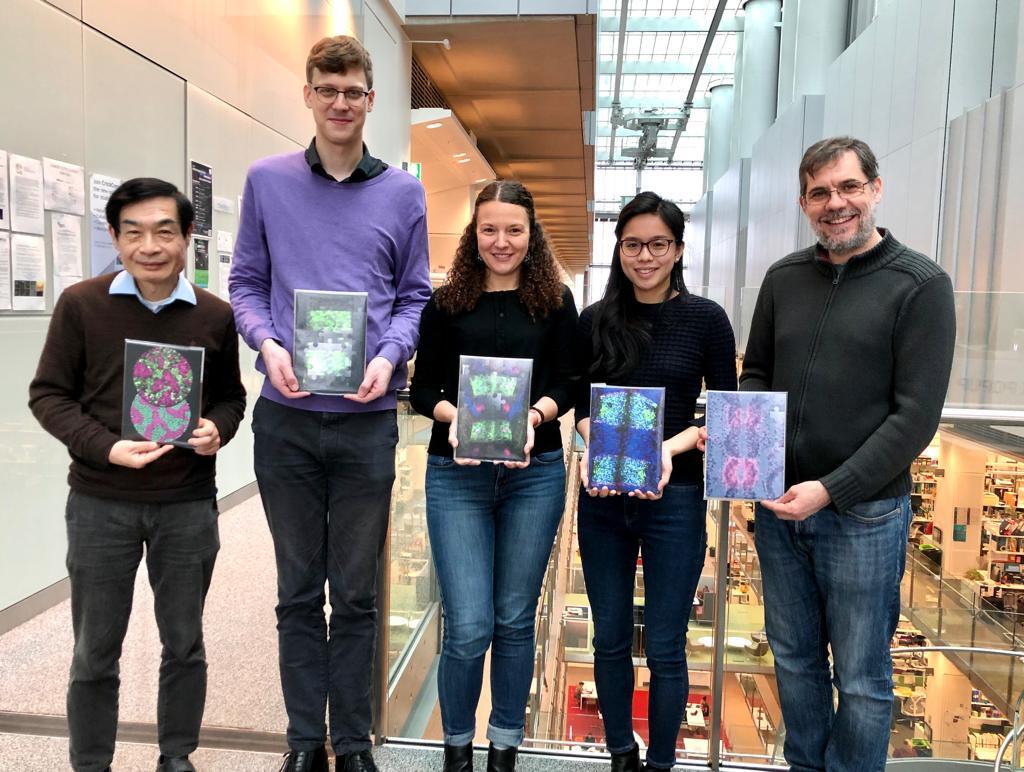
Monica and her colleagues in the David Wilkinson lab (at the Francis Crick Institute, UK). They all prepared images of the zebrafish hindbrain for the Retirement Symposium of David.
Did you enjoy living abroad during your PhD and first Postdoc?
I think it was the perfect time to be living in London – I really enjoyed it! Maybe I was lucky, because not only did my partner live in London as well, but my sister decided to do her PhD in Cambridge at the same time. Actually, my brother also stayed in the UK for a short while. The only difficulty perhaps was to find a place in London that would allow a commute that would be reasonable for both me and my partner. But things worked out really well for us.
“The research environment in Milan is growing…There are great labs and institutes spread across the city which in turn leads to many collaborations.”
How then did you experience your move back to Italy?
It was important for my partner and I that we would both manage to find rewarding, challenging jobs – we didn’t want to compromise on this. Due to good planning and some luck, this worked out well and we could start our new jobs roughly at the same time.
I moved to the IRCCS Humanitas Clinical and Research Center which is a good place to be. It is quite big and has a lot of immunology-related labs as well as a fast-growing neurobiology department with lots of internal collaborations. It also has a hospital, so there is a lot of interaction with clinics that can provide patient samples. The research environment in Milan is growing – for example, I think Illumina will open a Research Institute very soon. There are great labs and institutes spread across the city which in turn leads to many collaborations. For example, I’m collaborating with the Politecnico di Milano, which is a really well known university for engineering and bioengineering as well.
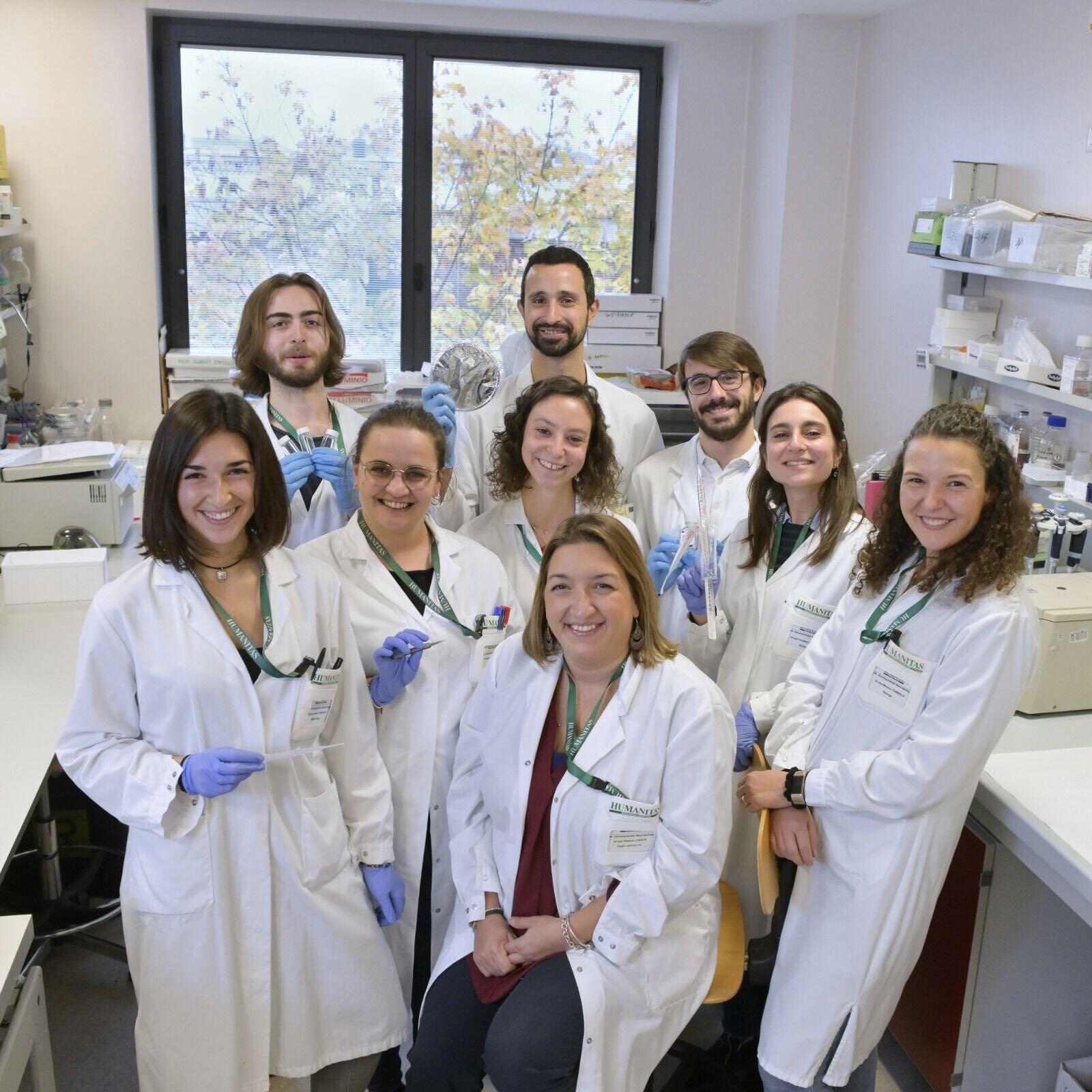
Monica and her colleagues in the Lodato lab at the IRCCS Humanitas Clinical and Research Center in Milan, Italy.
What strikes you as the most significant difference between the places you’ve worked at?
When comparing things between the UK and Italy, the main difference I’ve observed is the level of bureaucracy. Perhaps the best example of this is the time needed to order basic lab equipment. Whereas this often took only 5 minutes in the UK, it can take over a week here in Milan. It’s not a financial thing (as people often assume), but just a difference in the number of checks performed before an order is approved.
“Due to the COVID pandemic, it has perhaps been more challenging to feel part of the larger scientific community.”
How much do you feel embedded in the ECR and/or the larger scientific community?
I do feel quite a strong connection to the people I used to work with. I’ve always felt very much supported by them, for example when I needed some advice about specific experiments or career choices. Due to the COVID pandemic, it has perhaps been more challenging to feel part of the larger scientific community. Also, I’ve just had a baby which means that I’ve been on maternity leave. So, I haven’t been able to travel for a while and meet new people and/or reconnect with former colleagues. But of course, there are many virtual initiatives these days and these are great ways to link back to the wider community.
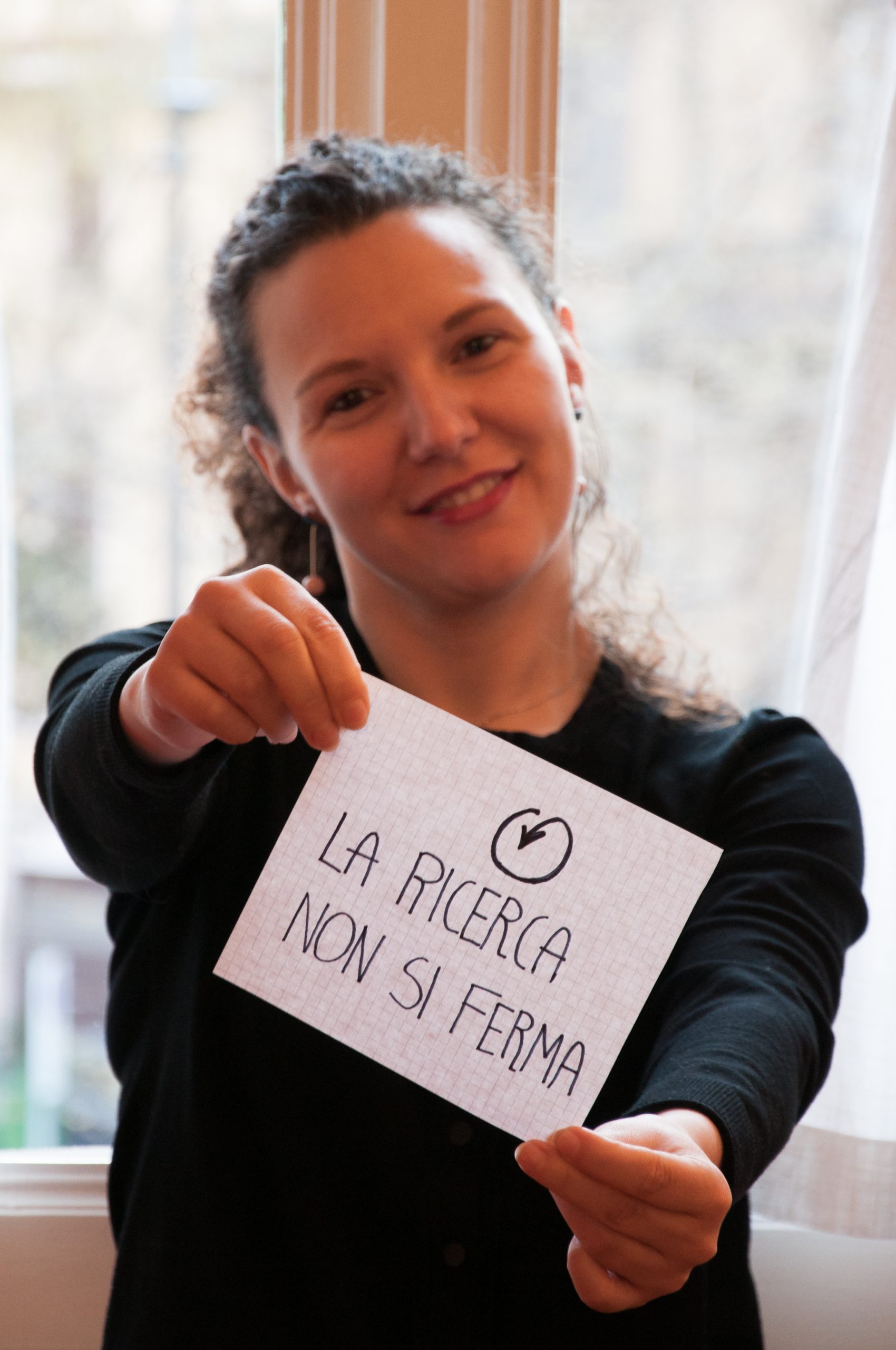
Monica during the COVID pandemic lock-down helping to promote research on behalf of the charity that sponsors her postdoc work at the IRCCS Humanitas Clinical and Research Center, Italy.
What do you think are the main benefits of preprints, especially for ECRs?
I’m a big fan of preprints: for my first-author paper, I was very clear that I wanted to post it on bioRxiv as soon as possible. Currently, I’m trying to finish a paper that was submitted a few times and has evolved significantly. My co-authors and I feel that now would be the right time to put it out as preprint to provide and accelerate access to our data, which we hope will be of great value to the community. Being able to show people what you’re working on can – as I’ve learned when moving to Italy – also make a real difference when applying to grants and funding schemes.
How did you learn about preLights and what made you want to join?
I learned about preLights through some of my colleagues at the Crick – they were already active preLighters themselves. I became familiar with the platform, followed it for a while and then decided to join in 2020 during the pandemic. It was then when I fully appreciated the surge of preprints and need for a highlighting service like preLights.
“…preLights is a great way to help you connect to the people behind the preprint.”
What has your ‘preLighter’ experience been like so far, for example in terms of interacting with preprint authors or fellow preLighters?
It certainly has been a good experience. I’ve found that if you cover things that are really key for your current work, preLights is a great way to help you connect to the people behind the preprint. It’s a good feeling when the authors of the preprint take the time to respond to your questions. I remember that for the preprint from the Lancaster lab that Teresa, Maiko and I covered in 2020, I’ve gone back to the authors’ responses quite a few times as it directly helped me with my own lab work.
It was great to work with other preLighters on this and one other preLights post – in both cases, we all got along really well. Dividing up the different task also helped to cover things more quickly which is often crucial when highlighting exciting, newsworthy preprints.
Where do you see yourself in 10 years’ time?
I would like to lead a research group – not a huge one, but rather one that is small and therefore more manageable. Also, I’d really like a university appointment since I enjoy teaching and communicating science to others. Ideally, I would teach courses on developmental biology, including disease biology and modeling. On that note, I’m particularly excited to lead science communication projects as part of my current research grant. I’m still thinking about possible projects, but one will probably revolve around 3D bioprinting which should be quite engaging.
What is something that people may not know about you?
I really love art, more specifically contemporary art. I often go to local museums or travel to places where I can see exciting new exhibitions. When I lived in London, I got into arts and crafts and ended up making a few etchings and abstract paintings. Without it always being intentional, I sometimes brought in some of the things I’ve come across in the lab.
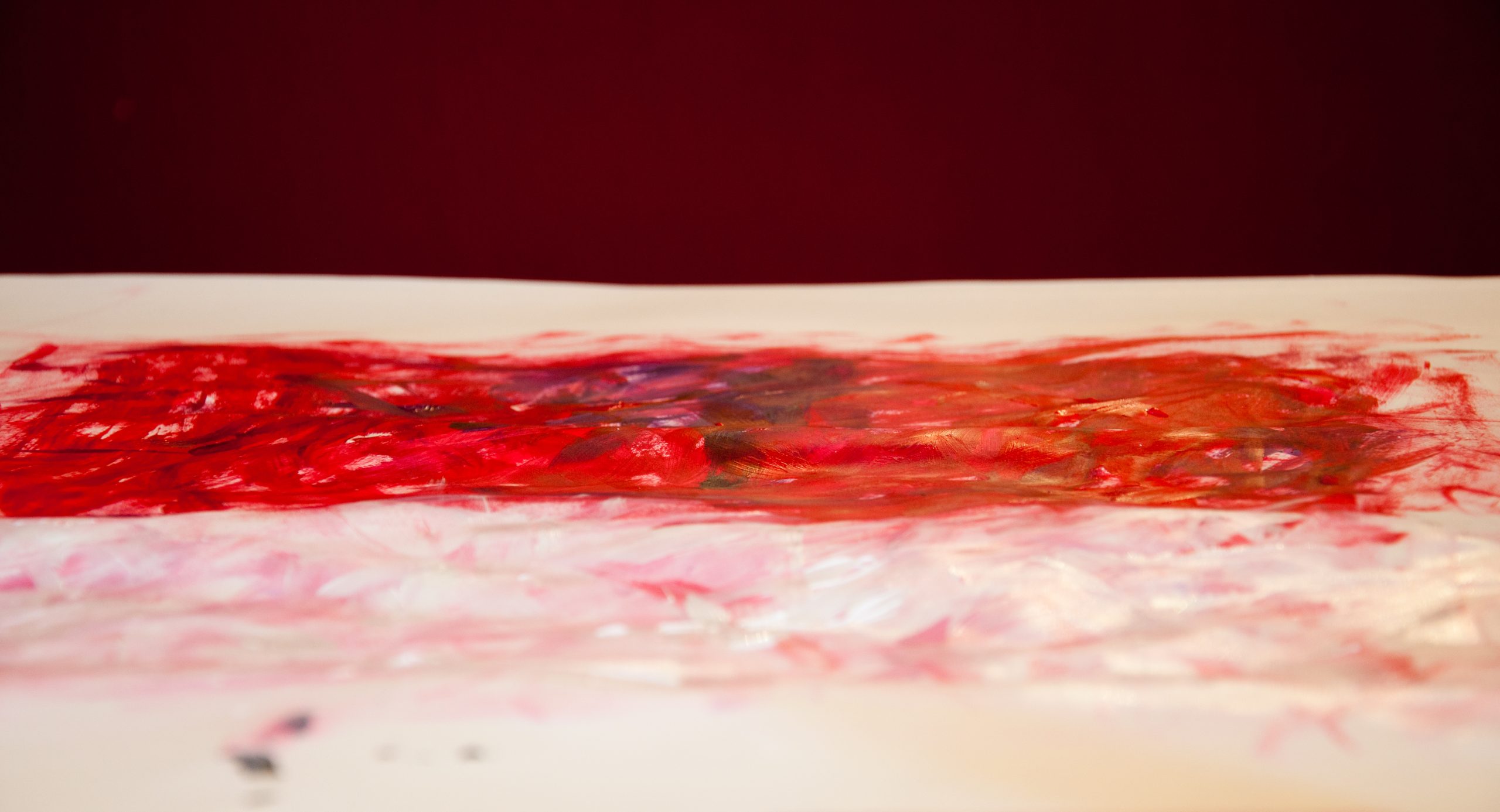
An abstract painting made by Monica showing her artistic side.










